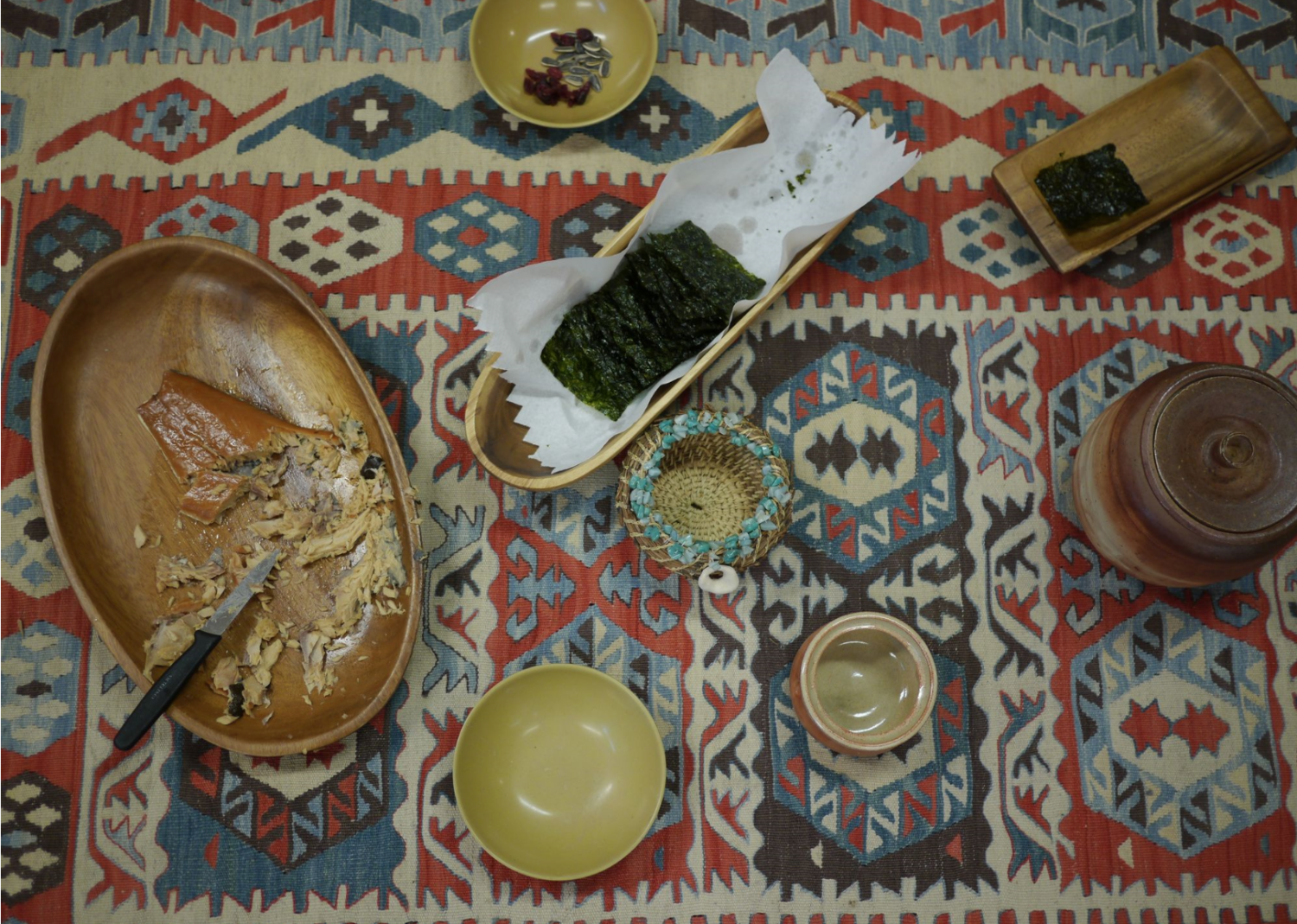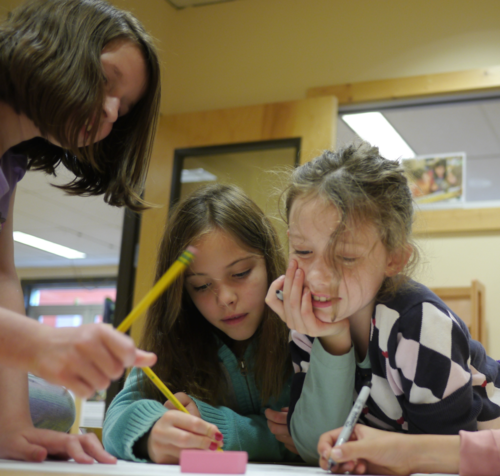Not just young children’s learning

In this week’s Hechinger Report, Beverly Falk writes, “Over the last several decades, an explosion of research from across the disciplines – neuroscience, psychology, sociology, medicine, and education – has confirmed that young children’s learning is optimally developed through active engagement with materials, experiences and relationships.” At Opal School, we explore the implications of that research in our work not only with our youngest learners, but with the oldest children we work with as well.
This morning, third-, fourth-, and fifth graders began their study of Oregon’s history. They met in a longhouse for a feast celebrating the return of the salmon people to the Columbia. During the celebration, they assumed the mantle of people who lived before us to begin to imagine their perspectives.
The engagement was rich with all of the elements Falk identifies: materials (creation stories and use of blackline pen to make sense of them); experiences (sharing of story and food – good thing we have salmon fishing families on staff!); relationships (between and amongst ideas, children, and adults.) As the students exchanged stories of our people and offered messages of greetings and gratefulness to the others who had gathered from across the Columbia Basin, I was struck not only by the degree to which the structure corresponded to the research Falk discussed but also by the degree to which it nurtured empathy (something we often think about in our work as an Ashoka Changemaker School):
RD: [We tell stories] to be reminded why we are here.
LH: I picked the berries over the summer, all the while looking forward to having this great feast and the blessing of the salmon.
BC: We are blessed to have the salmon and all of this food and to have all these good hunters and gatherers from all of our tribes.
RD: I’m thankful that our elders teach us to survive during this cold season. I’m hopeful we can follow their lesson.
TP: I’m thankful for all of the people whose effort made this happen and care for us.
Having a range of images from classroom life helps us understand what we mean by otherwise ambiguous terms like “high quality” or “empathy.” What do you notice through this small window? How is your practice – with children of all ages – informed by engagement with materials, experiences, and relationships? What does it look and sound like?

